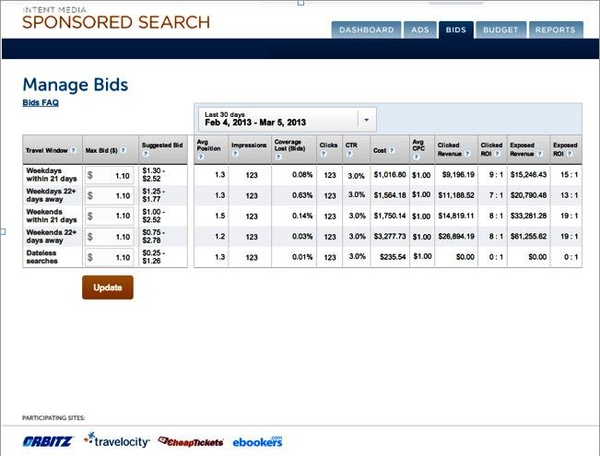Commentary
Best Practices For Hotels Advertising On Online Travel Agency Sites
- by Emily Dourte , August 22, 2013
Hotels increasingly turn to search-like marketing to drive bookings through their Online Travel Agency (OTA) distribution partners. These programs, available on major OTAs, allow hotels to secure premium placement whenever someone does a hotel search.
The programs generally work just like SEM. The hotel sets up a cost-per-click bid for their market and for the dates they need bookings. The hotel pays the OTA only
when their ad is clicked on.
Example of a hotel ad on an OTA (ad placement highlighted)
advertisement
advertisement
These innovative programs are designed for individual properties, which typically have limited time to spend on online marketing. They are also popular with hotels and property management companies with advanced capabilities, but a single hotel with little time for or experience with online marketing can be successful with nothing but a browser and a credit card.
Managing these programs is pretty easy. Generally a hotel draws from the photo and property description that already exist on the OTA to create an ad. More often than not, the system will automatically pull these elements together to create a default ad. So the hotel can keep it as simple as setting the maximum bid they’d be willing to pay for a click, setting a not-to-exceed budget, and leave the rest to the system.
Stopping there will give the hotel a powerful tool to drive additional bookings. But for hotels looking to improve the effectiveness of such campaigns, here are five best practices that are simple to apply and can meaningfully improve results.
1. Images matter. While your ad can pull in an
image you already have at the OTA, be sure to try out other images if the particular program allows it. Our research found that having the right image can drive major improvements in response rates. You may even have the option for the system
to automatically test multiple images. Simply select the images you want to test and it will cycle through them until it identifies the best performer.
2. Spend some time on your ad text. While not required, most programs give you the opportunity to include a line of additional text with your ad. This is
a great opportunity to highlight any offers or benefits that don’t typically get their due on your property’s OTA listing. Try and think like a customer: what’s important or
different about your hotel? Here’s a more expansive set of copy tips and best practices.
3. Remember seasonality. Highlighting your outdoor pool may not make sense when it’s 50 degrees. Alternatively, if there are
great reasons to stay with you out of season (when you may most need bookings), think about how to highlight them – either in your ad text or in your images. Are you close to attractions,
events, or other draws?
4. Check your bids. This should not become an all-consuming time sink. But neither
should you just set a spending limit and let the system run on its own. Set up a schedule where you habitually take a look at your ROI for the dates you are targeting. Increase bids in high
performing travel windows for more visibility and bookings. Decrease bids in under performing travel windows to increase your ROI. And make sure you are not leaving money on the table: you can
cap out early if your budgets are set too low when there are more bookings to be had.
Bid management screen where hotels can set bid and monitor the results in real time
5. Bring “fresh
eyes.” Are there any new features that have come out that you ought to take advantage of? What about new placements? For example, on a number of OTAs your ads can now appear on the
package search results page and even on other hotels’ information pages. Now that there’s more to it than just securing the top of the search results and you may want to experiment with
the expanded offerings.
With the overwhelming importance of online bookings, it is imperative that you take advantage of every tool to assure that you get noticed, are given full consideration, and not only protect your market share, expand it.


